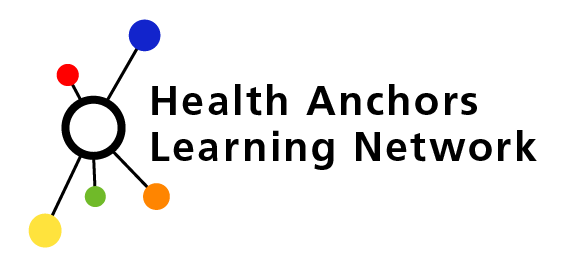Tackling racial inequalities as a health anchor
Years after the murder of George Floyd and the subsequent Black Lives Matter movements across the globe, we continue to have important conversations about racial inequality - but how can anchor organisations translate this to meaningful action?
Guest blog by Jahaan Abdurahman, an Innovation Consultant at Innovation Unit
Racial inequalities in health and healthcare have long been a topic of concern for those working in the sector. Throughout the pandemic, startling statistics on higher mortality rates experienced by minority ethnic groups in the UK highlighted the need for more research and action. As a result, last year saw the establishment of the NHS Race and Health Observatory, an independent body hosted by the NHS Confederation and supported by NHS England, tasked with examining long-standing health inequalities affecting black and minority ethnic patients and communities. But what can health anchors do?
Anchor programmes are built around action that improves social determinants of health and reduces health inequalities, meaning that anchor organisations often already hold the skills, knowledge and resources required to work towards racial equality in health and healthcare.
There are, however, a number of subtle differences which can make or break the success of initiatives targeted specifically at improving racial inequalities. Below, we explore the common building blocks of anchor action and how they can be adapted to support a health anchor in tackling racial inequality.
1. Engage the community first
Great anchor organisations engage the community first. This can often be challenging, but mistrust can exist between ethnic minority communities and health care providers, creating additional barriers when addressing racial inequality as a health anchor.
As outlined in the NHS Race and Health Observatory’s major review, ethnic inequalities in access to and experiences of healthcare and health outcomes have been noted as longstanding problems, which are rooted in experiences of structural, institutional and interpersonal racism.
In order to engage these communities in a local anchor programme, we must first accept that the legacy of historical discrimination and disadvantage has a continuing effect.
Next, we can begin to really listen to these communities. This means building authentic relationships with these communities through community members in the workforce, current patients and then also people who may be excluded from accessing services in your local community.
When identifying the community to engage, it can be equally important to ask ‘who am I not engaging with?’ Working with community and voluntary sector organisations, such as faith groups, and existing community leaders can help to identify those who are unable or unlikely to engage with your organisation independently.
Although there is no quick fix to building relationships and trust, engaging with compassion and understanding with the intention of fostering long-term collaboration can go a long way.
2. Lead bravely
Strong leadership is always required for anchor work, but leaders need bravery in order to identify and challenge racial inequality as it can often be politically contentious. As heard in HALN learning sets and events, many anchor leads consider themselves to be ‘activists’, seeing their roles are inherently political and in the business of change making - it is exactly this attitude and approach which is required. Strong leaders of health anchors talk about race.
This confidence extends to the language used whilst engaging with this work. Anchor leaders must be confident in how they describe issues of race and racial inequality. This will allow them to continually hold the narrative and consistently make the case for why addressing racial inequality as an anchor institution is vital. Where anchor leaders don’t have lived experience to inform their use of the correct terminology, they can work closely with those who hold lived experience to shape their understanding.
3. Create intentionality that brings people together
Anchor work should always be intentional, but there is the added complication of racial inequality being a commonly misunderstood and stigmatised subject. What do we actually mean by ‘tackling racial inequality in health and healthcare’? Do we all understand the need for this work? These important questions require the organisation to ask difficult questions and be honest and open in their reflection. It is only once an organisation has built a shared understanding that they can become truly purposeful.
The next step involves using data and stories to inform and guide this work, giving it clear direction. This includes being specific about which racial inequalities need to be addressed and which specific individuals, groups or communities this involves. This will often vary across different geographies.
Once intentionality is established, it is important to tie ongoing measures around racial inequality to organisational accountability. This will maintain a deliberate focus throughout the anchor programme.
Many anchor leaders consider a key part of their role to be creating accountability to the local community, with some anchor programmes building creative governance structures which continually keep them answerable for their original intentions.
4. Bring everyone into this work
To truly build change across your whole organisation, ensure that anchor work on racial inequality is tied to other conversations and work happening on race within your organisation.
For example, connecting the work of anchor, workforce and equality, diversity and inclusion departments across an organisation can bring about important reflections for an organisation. This approach will also harness the passion of colleagues who are driven to make change.
There is no single perpetrator of racial inequality, but systems and structures that keep it in place. Tackling racial inequality requires organisation-wide change, so bringing individuals from across your organisation into this work helps unearth hidden issues that perpetuate racial inequality, and so build your movement for change.
For more examples and information, watch the HALN event on ‘Anchor institutions taking action on racial inequality’ that took place during the HALN Launch Gathering in April 2021.
